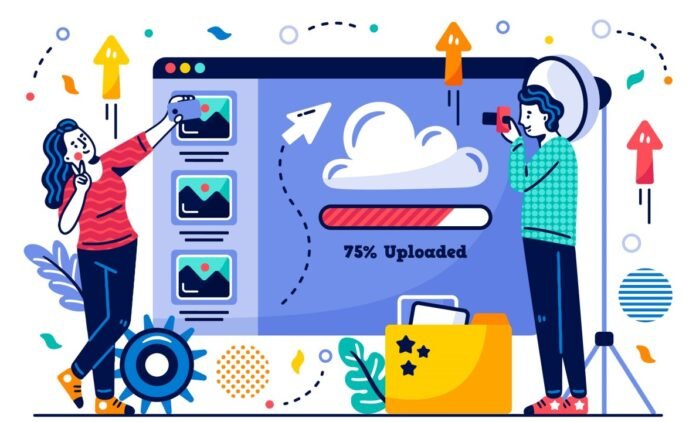Have you ever considered how websites have transformed from frozen screens to interactive interfaces? That’s the magic of web evolution. So, welcome to the borderless design world, where lines are cut through every moment. It’s like seeing the reinvention of the web, transforming dull pages into interesting places. In this article, we will get into the world of web design by harnessing the power of creativity and technology. It’s about a whole new way of thinking about going online. Prepare to find out how web design Toronto is bursting the shackles and entering a whole new world of possibilities. So, let’s begin!
Understanding Traditional Web Design
Traditional web design was more like painting-by-numbers. Designers reworked templates and played it safe. They had to fit everything in boxes, and creativity often came second. It was rather limiting, to say the least. Websites were brochures rather than interactive experiences.
There wasn’t as much charisma as we see today in these designs. Think back to those sites, stripped-down in text, some images, and, if you were lucky, a flashy GIF. Yeah, those were the days!
The early web wasn’t very interactive. But you’d go, and it would stand there, unmoved by your clicks and scrolls. In fact, they were more like static billboards than interactive spaces in which you could engage and explore without end.
Technology and tools limited the designers like trying to build a modern house with old-fashioned tools. Of course, they did what they could, but what they had to work with was limited.
Back in those days, creating a website was a little like assembling a jigsaw puzzle. The rules were fixed, and going outside the lines was dangerous.
Traditional web design was like being handed a colouring book and being told to colour only inside the lines.
Breaking Conventional Constraints
In the past, web design was rather like colouring within the lines-safe, repetitive and a little boring, to be frank.
But guess what? Designers considered it time to toss those rules out the window. So they rolled up their sleeves and started thinking outside the box in a very literal sense. It turns out that they’ve had enough of cookie-cutter templates. They just wanted to make something new!
So, what did they do? They let their inner rebel go wild and began to do things to their taste. It was like sprinkling spices on a tasteless plate-suddenly things grew interesting. They left behind that one-size-fits-all policy and started building sites that were individualistic, lively and fresh.
No more of those static web pages, eyes wide open and not a word. Now, websites are talking back! They became interactive playgrounds that visitors could click, scroll, and explore. It was a whole new ballpark, and everybody wanted to play.
Technology provided designers with new instruments to push the limits even further. They accepted augmented reality (AR), virtual reality (VR) and artificial intelligence with open arms. It seemed to add a pair of giant wings to creativity. Suddenly, the sky was no longer a limit.
Have you forgotten those websites are more like mazes than strolls in the park? But those days are gone. With user-friendly experiences, designers began to build; navigation could not have been easier. Orienting visitors in the virtual landscape is all a matter of making them feel at home.
Trends Revolutionizing Web Design
Now, websites are no longer collecting dust. Not at all. They’re very much alive, and they use interactive modules to draw in visitors. Have you ever seen a button change colour or pop up when your mouse pointer appears? That’s the magic of micro-interactions. But they’re hidden like little treats throughout the site, so it has a lively and exploratory atmosphere.
Accessibility in web design trends has also become an important focus. The aim is to make websites usable by everyone, whatever their ability. Readable fonts, high-contrast colours and voice navigation are being designed by designers. A huge open door into the web world; once through, you’re in.
What about storytelling? But websites don’t just tell you-they describe what you asked for. Designers are using images, videos and stories made exciting to give consumers a great experience. A web page today is like an adventure.
Conclusion
In the exciting world of web design, it’s clear: There is no limit. There are endless opportunities, from static pages to dynamic experiences and impossible journeys. This is how we end the foregoing discussion. Web design is not just pretty layouts. Actually, it should design interesting and useable rooms. Yet, with the speedy development of technology, more surprises await tomorrow. But what matters is that you have to test all the time, and come up with new ideas, innovate. That is the ever-changing frontier of web design.
